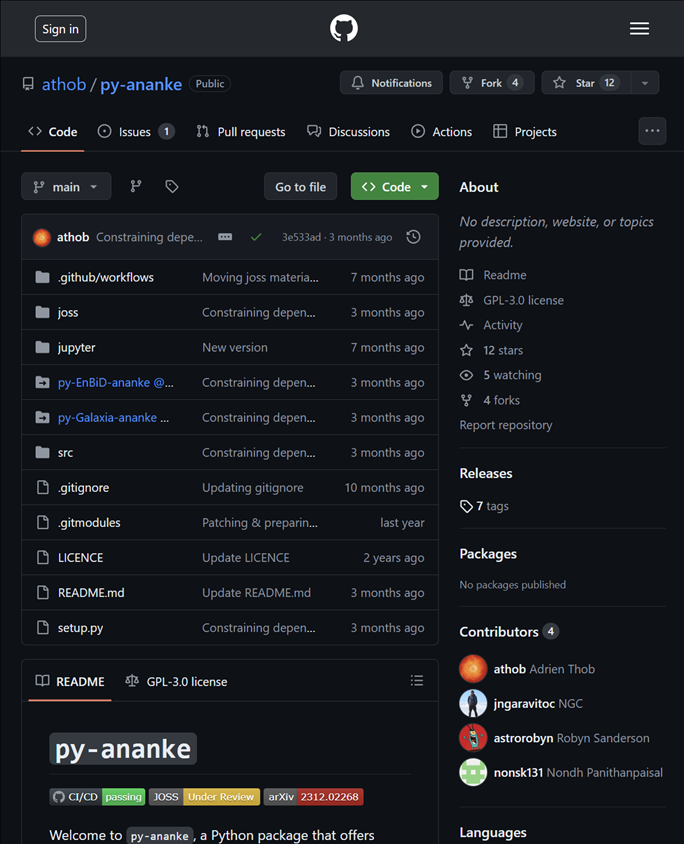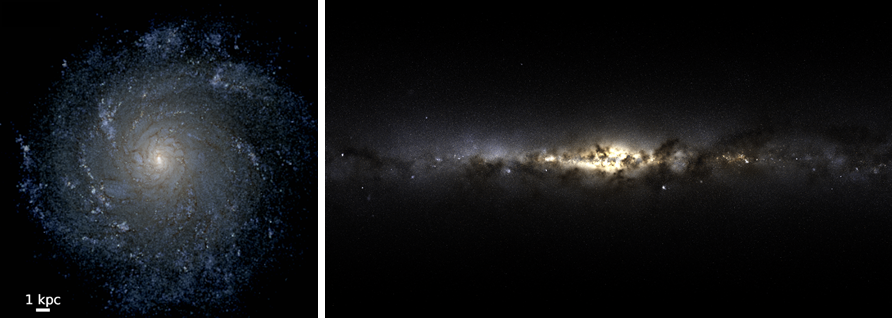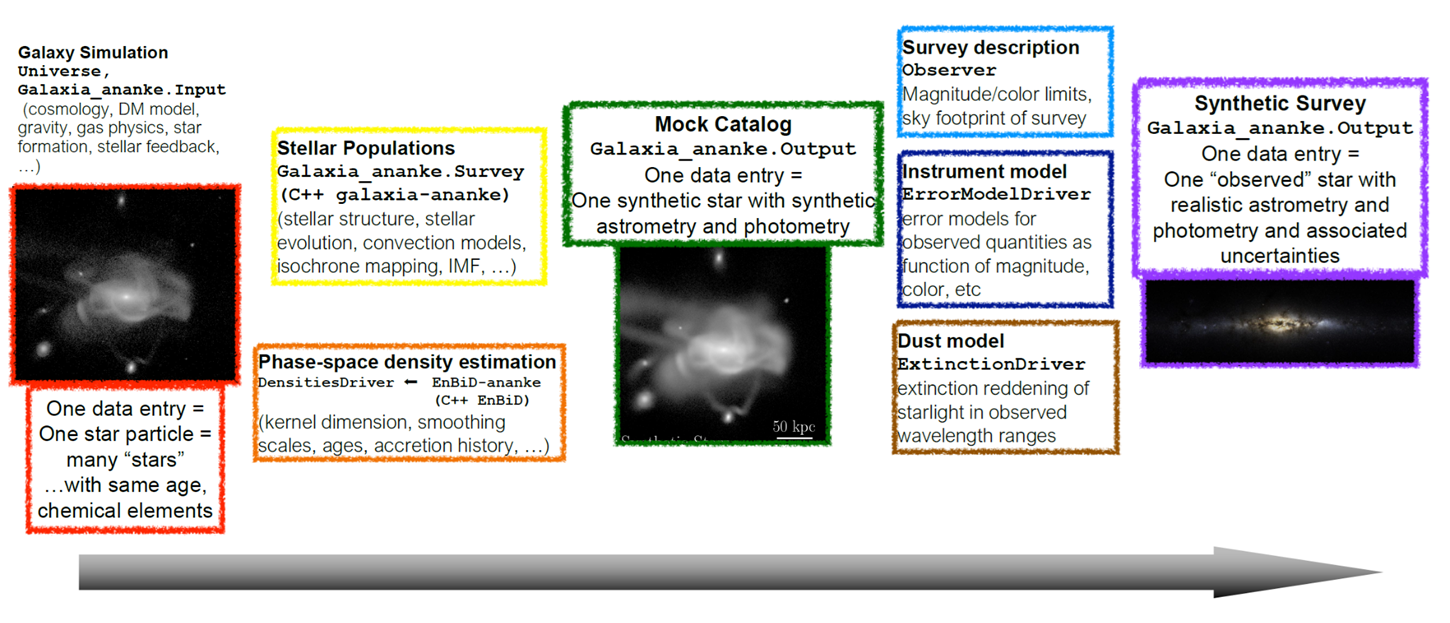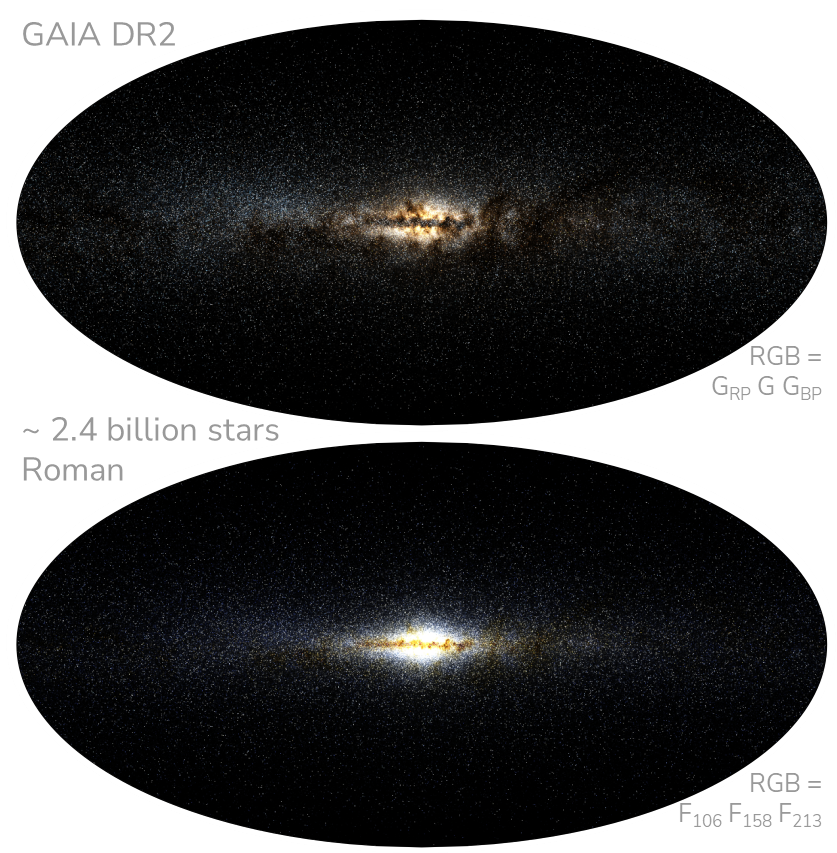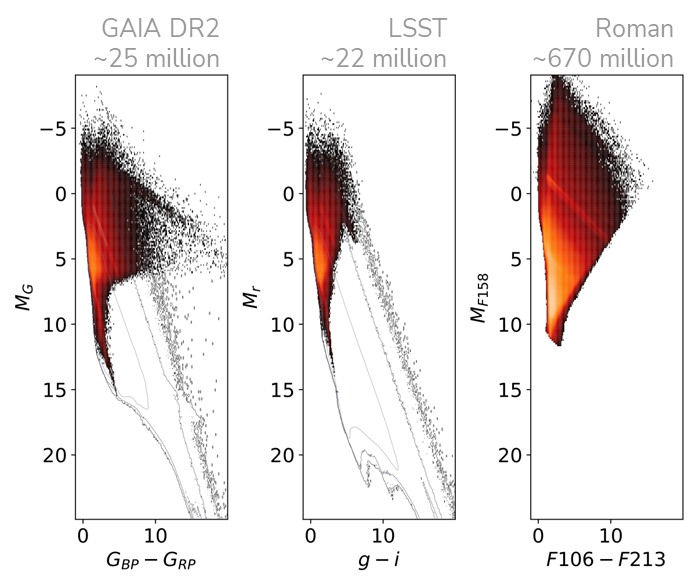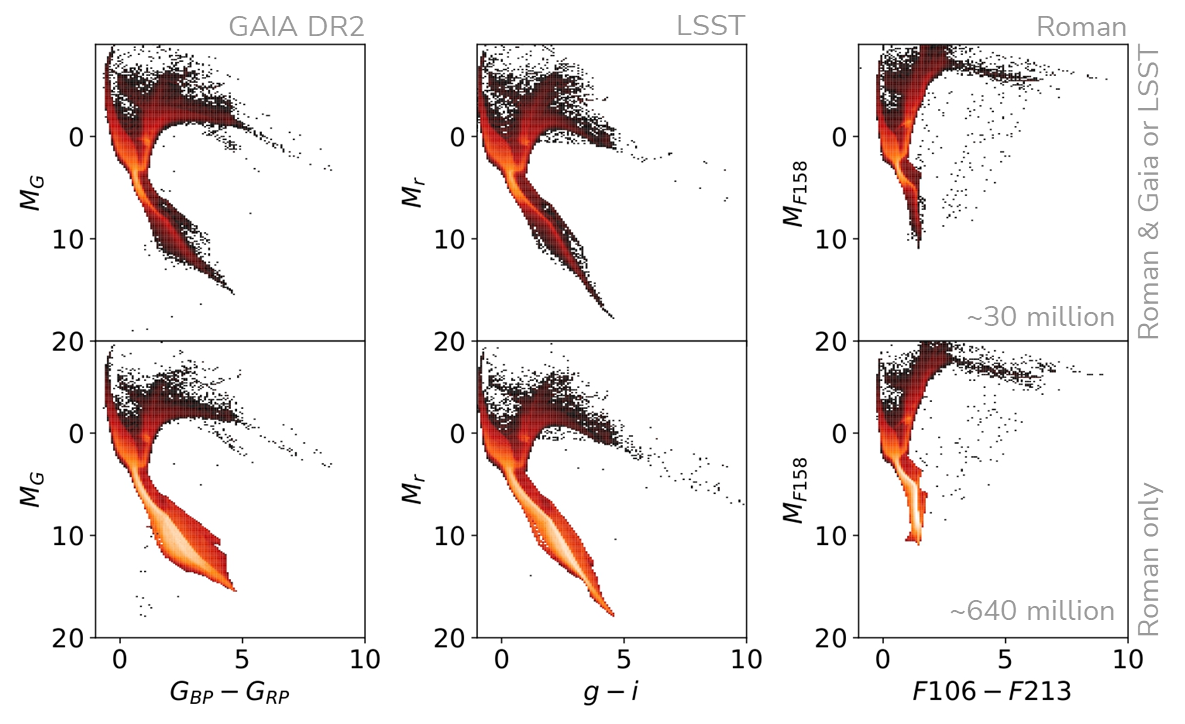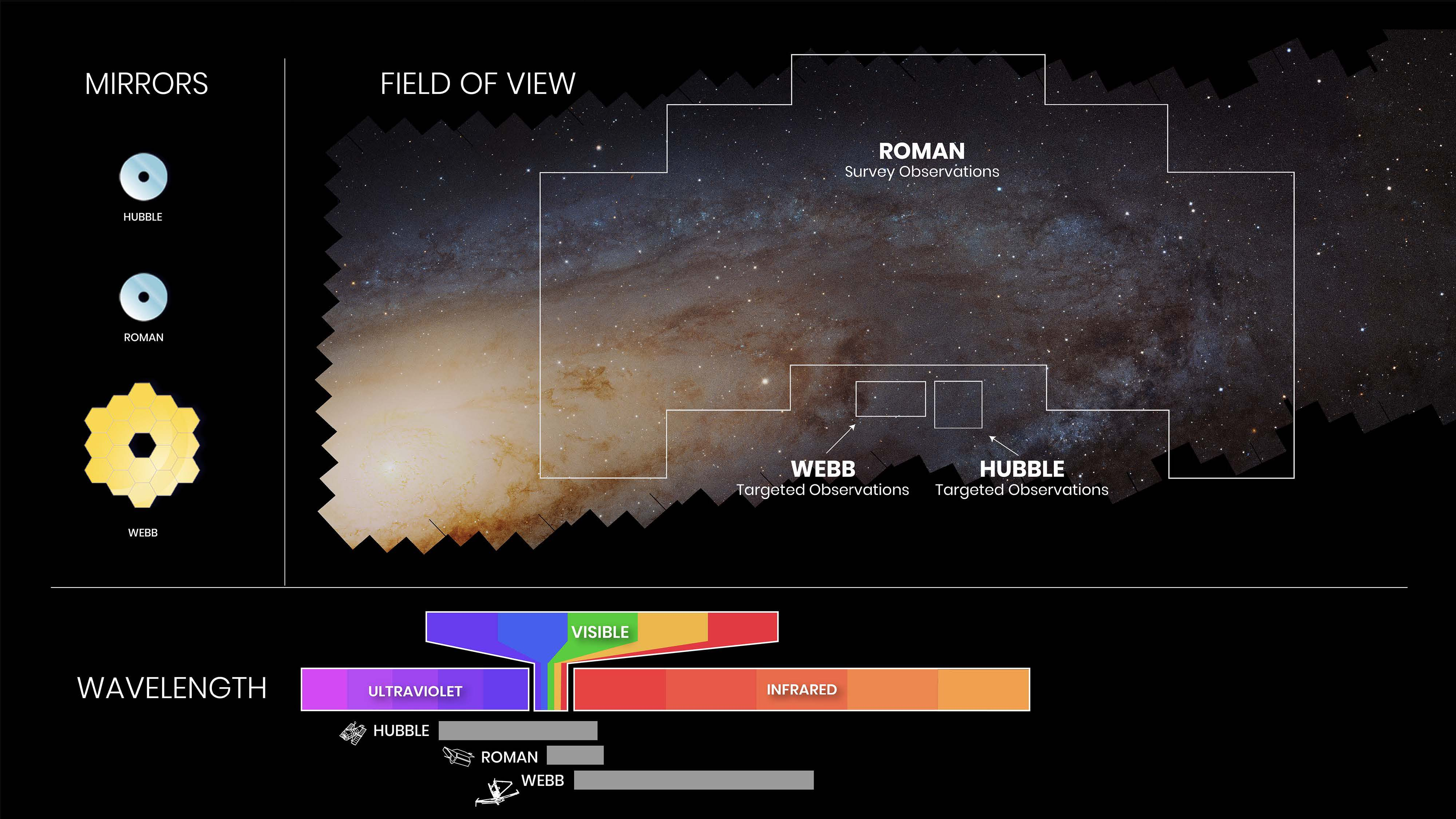
Figure 1 - Illustration of the differences between Roman and both Hubble and Webb in terms of their respective field of view and photometry capabilities.
A galactic plane survey telescope
The Nancy Grace Roman Space Telescope, named in honor of NASA’s first Chief of Astronomy, is a next-generation observatory designed to answer critical questions in cosmology, exoplanet exploration, and infrared astrophysics. Scheduled for launch in the mid-2020s, the Roman Space Telescope is poised to revolutionize our understanding of the universe.
Equipped with a 2.4-meter (7.9 feet) primary mirror, the Roman Space Telescope boasts a field of view 100 times greater than that of the Hubble Space Telescope, while maintaining similar resolution. Its Wide Field Instrument (WFI) will capture vast regions of the sky in unprecedented detail.
One of the key features of the Roman Space Telescope is its capability in near-infrared photometry. This ability allows it to peer through dust and gas clouds that obscure our view in visible light, making it an ideal tool for exploring the heavily extincted galactic plane. For that reason, the Roman early definition science team selected a galactic plane survey as top priority.
As such the Roman Space Telescope will play a crucial role in advancing galactic science. By surveying large areas of the galactic plane, the telescope will create detailed maps of the distribution of stars, star-forming regions, and the structure of the Milky Way.
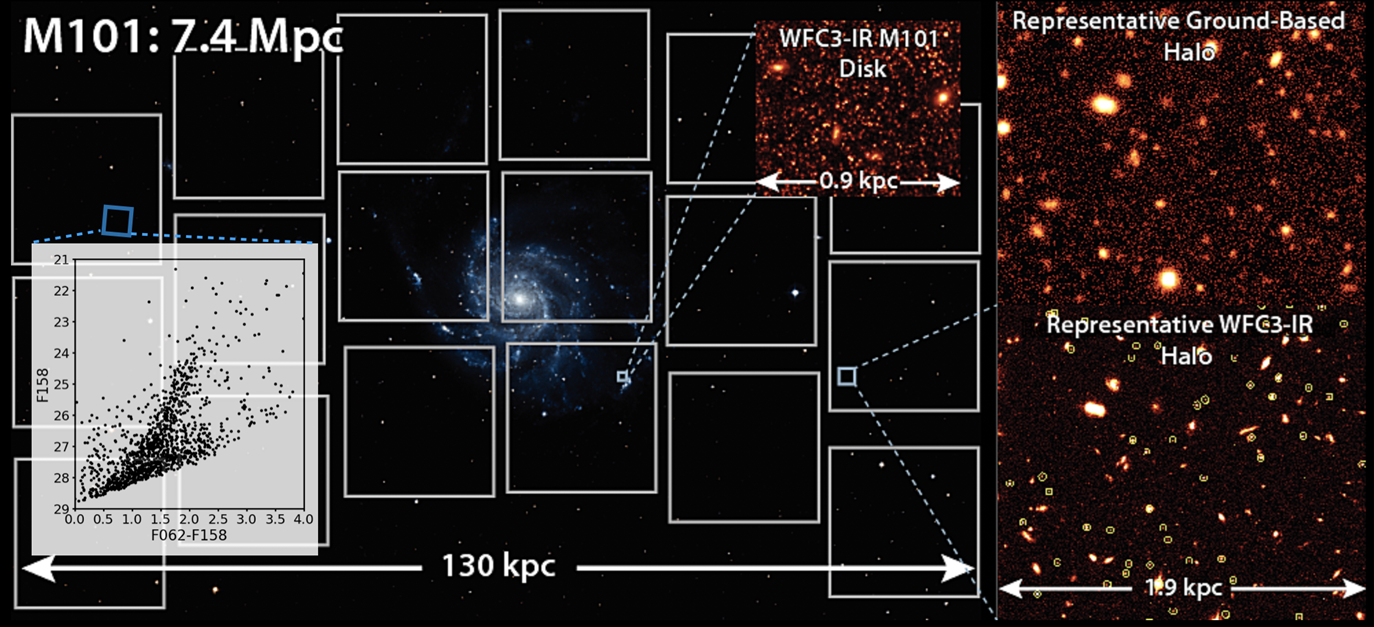
Figure 2 - Example of a Roman galaxy-mapping observation. The combination of the wide field and high spatial resolution allows us to map the stellar halo to large distances by separating the sparsely-populated stars from background galaxies while also providing a rich data set for resolved stellar populations in the main body of the galaxy. Left: Sky survey image of M101 with a single Roman footprint overlaid. Right: High-quality ground-based (top) and WFC3-IR data (bottom) from a representative low stellar density field are shown to highlight Roman’s ability to distinguish faint stars (circled on the WFC3-IR image) from galaxies. Inset right: WFC3-IR data from the tiny marked region in the main body of M101, showing the exquisite resolution and rich data set of resolved stellar photometry. Inset left: CMD of HST/UVIS imaging in outer M101, transformed to the Roman bandpasses.
Roman Infrared Nearby Galaxies Survey
The Roman Infrared Nearby Galaxy Survey (RINGS), led by Principal Investigator B. Williams, is a major Roman Large Wide Field Science Program. It aims to develop advanced software tools for simulating and analyzing Roman surveys of nearby galaxies. This project was approved in response to the NASA ROSES solicitation "D.14 Nancy Grace Roman Space Telescope Research and Support Participation Opportunities" (number NNH22ZDA001N-ROMAN).
RINGS aims to provide the scientific community with robust software tools that generate simulated Roman imaging data based on numerical simulations. By simulating Roman observations, the community can validate and refine model predictions related to star formation, galaxy structure, and dark matter distribution. Moreover, these tools will help optimize observing strategies, allowing us to efficiently plan Roman observations of resolved stellar populations in both crowded and low surface brightness regions.
The challenges of source separation in crowded fields are shared by both the RINGS project and galactic plane surveys. By addressing these challenges, the RINGS project will not only advance our understanding of nearby galaxies but also enhance the analysis of data from galactic plane surveys. This synergy will improve our ability to interpret complex stellar environments, benefiting a wide range of astronomical research.


